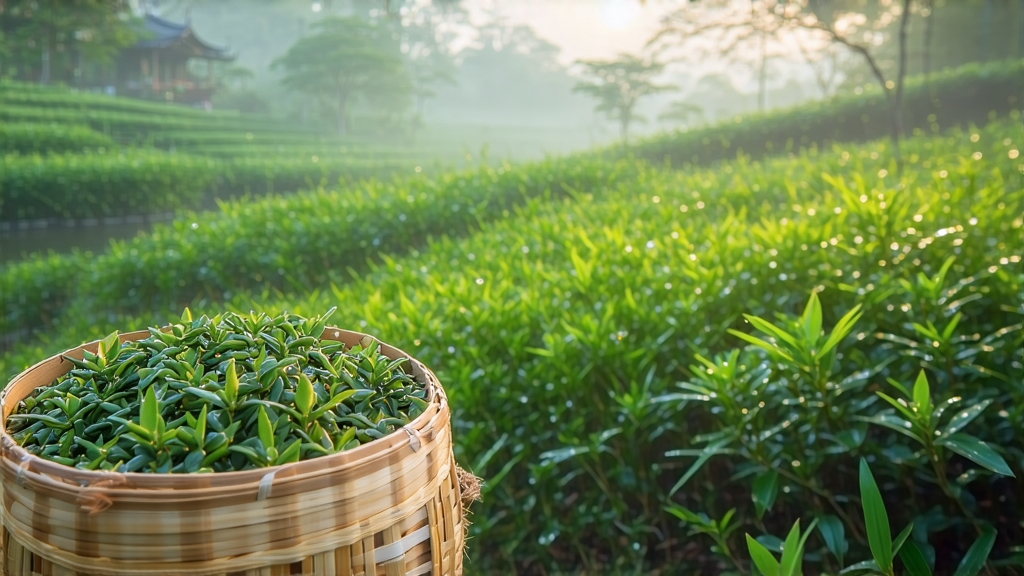
Tucked between the mist-laden hills of Dongting Mountain in Jiangsu Province, Biluochun—literally “Green Snail Spring”—has captivated Chinese scholars, emperors and, more recently, global tea aficionados for over a thousand years. Its name alone evokes the season of its harvest and the tiny spiral shape each leaf assumes after firing; yet behind that whimsical curl lies one of China’s most technically demanding green teas, a beverage whose fragrance is likened to fresh peaches and whose aftertaste carries the mineral sweetness of Taihu Lake. For international drinkers accustomed to the grassy simplicity of Japanese sencha or the nutty comfort of gunpowder, Biluochun offers a delicate, almost Burgundian lesson in how terroir, cultivar and human touch can conspire to create a cup that tastes like bottled early morning.
Historical whispers place Biluochun’s birth during the Tang dynasty (618-907 CE), but credible written records begin in the late Ming, when the tea was listed among the “Ten Famous Teas” presented at the imperial court. Legend claims a tea picker spied an aromatic tea shrub growing among wild peach and apricot trees; the resulting brew so astonished the Kangxi Emperor (r. 1661-1722) that he rechristened the originally vulgar “Xia Sha Ren Xiang” (“Scary Fragrance”) with the more elegant title we use today. Commerce soon followed fame: by the Qing, Suzhou tea brokers were exporting compressed cakes of Biluochun along the Grand Canal to Beijing and, via Canton, to European trading houses who recorded it under the pidgin label “Pi-lo-chun.”
True Biluochun comes only from the Dongting Dongshan (East Mountain) and Xishan (West Mountain) peninsulas that jut into Taihu Lake, China’s third-largest freshwater body. The lake’s moderating influence creates a humid microclimate where early-spring mists filter sunlight, slowing photosynthesis and coaxing the tea bushes—predominantly the small-leaf “Fuding Da Bai Hao” clone—to stock amino acids at the expense of bitter catechins. Local growers still intercrop their bushes with fruit trees; fallen petals and ripening peaches perfume the air and, so believers say, infiltrate the leaf itself. Attempts to transplant the cultivar to Sichuan or Zhejiang have produced larger, less aromatic spirals, proving that Biluochun is as inseparable from its terroir as Champagne from chalk.
Harvest begins around the Qingming festival (early April) when “one bud with one unfolding leaf” reaches 1.5–2 cm. Pickers work in 48-hour bursts, plucking only in the 3-hour window after dawn when dew still shields the tender tips from bruising. A seasoned picker’s daily yield is barely 500 g of fresh leaf; 6 kg of which will shrink to 1 kg of finished tea. Speed matters: enzymes inside the fragile cells begin oxidizing within minutes, so baskets are rushed to village courtyards where the kill-green phase must start within two hours of plucking.
Chinese green tea is defined by the swift de-enzyming of its leaves, and Biluochun’s craft version is among the most kinetic. Leaves are scattered across a 200 °C copper wok, hand-tossed for 45–60 seconds until a faint grassy note lifts and the leaf edges feel velvet-dry. Next comes the unique “rub-spiral” stage: three to five leaves at a time are rolled under a bamboo mat against the wok’s curved wall, fingers applying just enough pressure to break surface cells and coax juices to the cuticle while coaxing the iconic spiral. Temperature drops incrementally from 120 °C to 60 °C across three cycles, each lasting four minutes; overheating brittles the leaf, under-heating leaves a vegetal aftertaste. Finally, a gentle 50 °C bake for 20 minutes sets the moisture at 5–6 %. The result is a downy, jade-green curl no larger than a paperclip, smelling of peach skin and sweet pea.
Because the leaf is so young and densely covered in trichomes, Biluochun prefers cooler, softer water than most green teas. Aim for 75–80 °C water; anything hotter flattens the volatile damascenone compounds responsible for its stone-fruit nose. Glassware is traditional in Jiangnan: a tall, thin 250 ml “zheng bei” allows the spirals to sink balletically, then